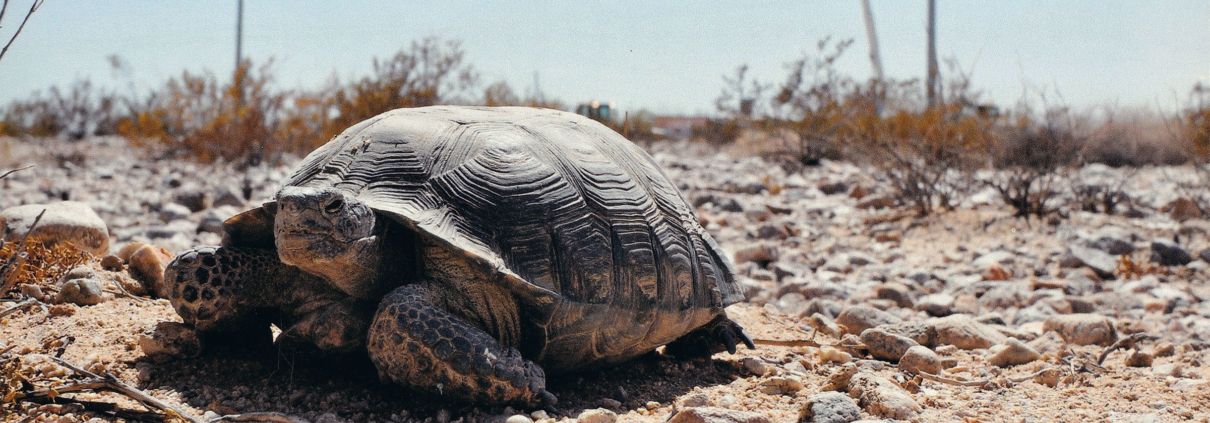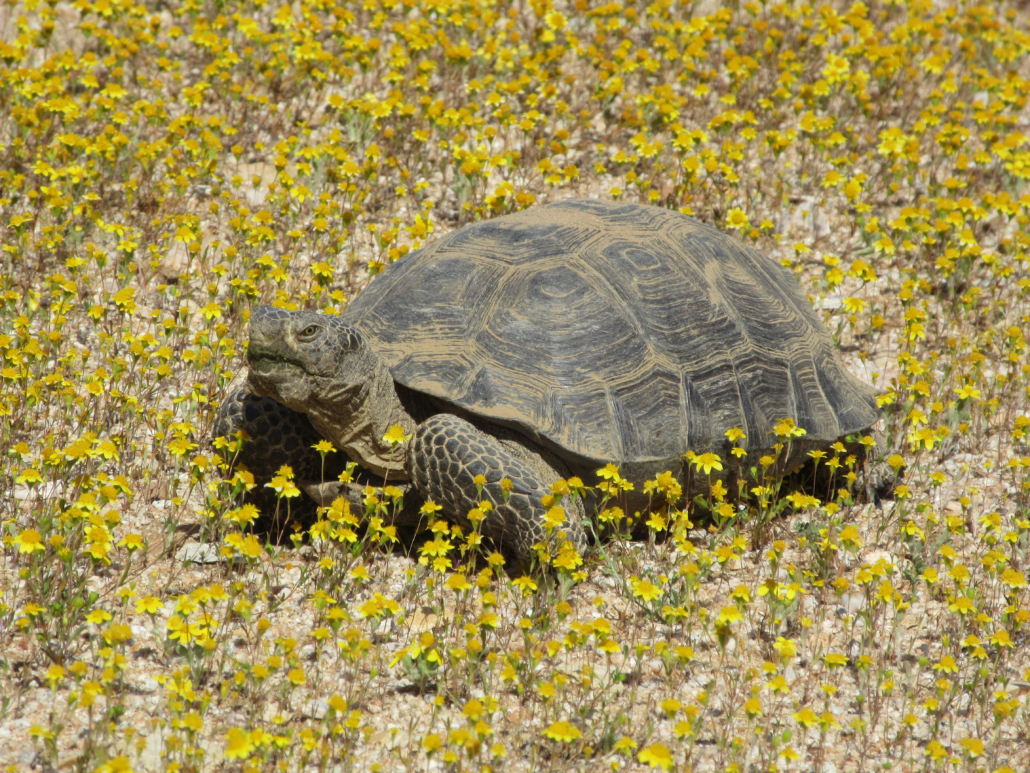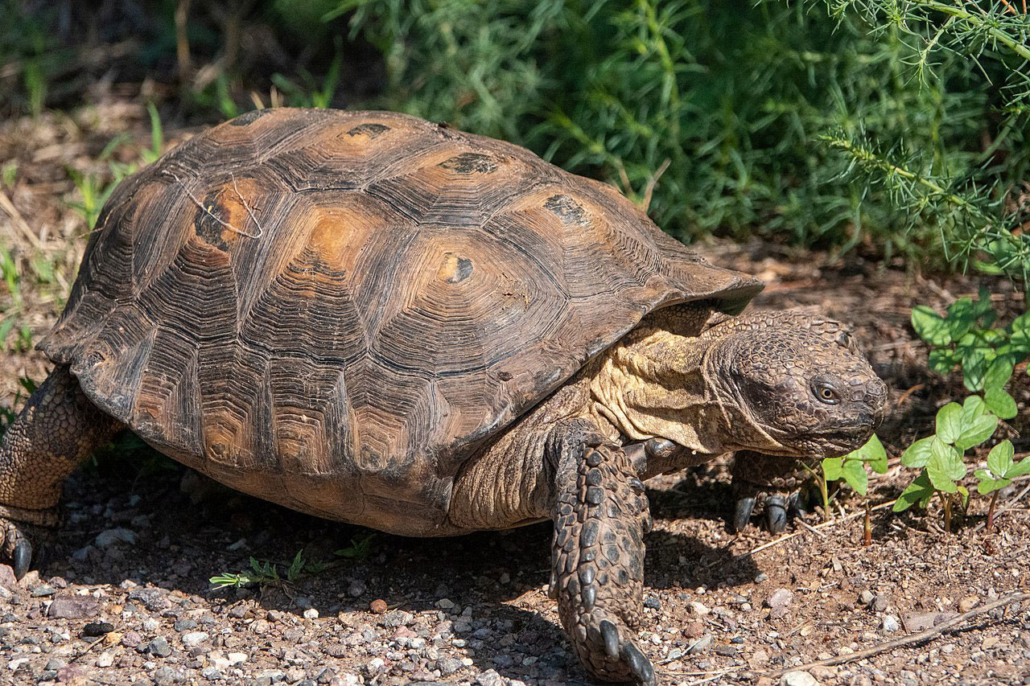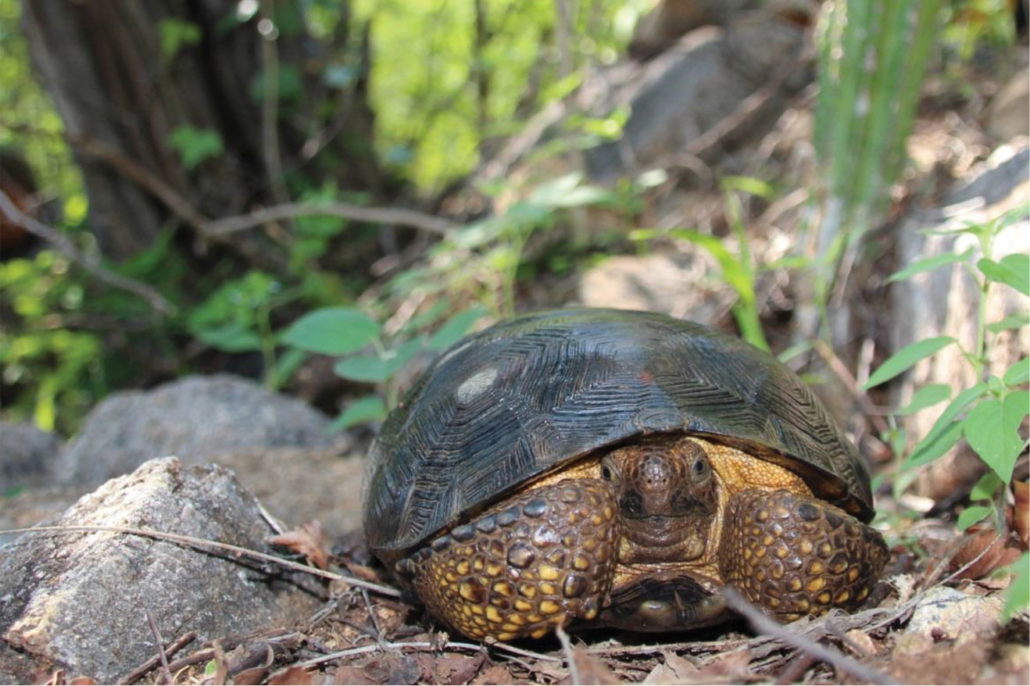Agassiz’s Desert Tortoise
Agassiz’s desert tortoise is listed as Threatened on the Endangered Species Act. Under this law, take of Agassiz’s desert tortoise is prohibited. The term “take” means to harass, harm, pursue, hunt, shoot, wound, kill, trap, capture, or collect, or to attempt to engage in any such conduct (section 3(19), federal Endangered Species Act of 1973, as amended). Possession of a wild Agassiz’s desert tortoise is prohibited, as possession is included under capture or collect. In addition, it is unlawful to deliver, receive, carry, transport, or ship in interstate or foreign commerce, by any means whatsoever, and in the course of a commercial activity, any endangered or threatened wildlife (50 Code of Federal Regulations 17.21(e) and 50 Code of Federal Regulations 17.31(a)). In addition, 50 Code of Federal Regulations 10.12 defines wildlife to mean any wild animal, whether alive or dead, including without limitation any wild mammal, bird, reptile, amphibian, fish, mollusk, crustacean, arthropod, coelenterate, or other invertebrate, whether or not bred, hatched, or born in captivity, and including any part, product, egg, or offspring thereof. The federal Endangered Species Act protects Agassiz’s desert tortoises in California, Nevada, Utah, and – for populations that occur west of the Colorado River – Arizona. Populations of Agassiz’s desert tortoise located east of the Colorado River in Arizona are not currently protected under the federal Endangered Species Act but are nonetheless protected under state law (see below).
In Arizona, Agassiz’s desert tortoises are protected under Arizona Revised Statute (ARS) 17-306, which states that it is unlawful to release wildlife (including Agassiz’s desert tortoises) in Arizona without prior approval from the Commission/Arizona Game and Fish Department. ARS 17-309 establishes the penalty for a violation. Per Arizona Administrative Code R12-4-402, it is unlawful to import, export, or offer to sell live wildlife, including Agassiz’s desert tortoises. It is unlawful to propagate captive Agassiz’s desert tortoises or export an Agassiz’s desert tortoise from Arizona.
In California, Agassiz’s desert tortoise is listed as Endangered under the California Endangered Species Act. In general, it is illegal to sell, purchase, harm, take, possess, transport, or shoot a projectile at Agassiz’s desert tortoises in California, or to move them out of the State. (California Fish and Game Code, Division 5. Protected Reptiles and Amphibians, Article 1. Desert Tortoises [5000 – 5002]).
In Nevada, Agassiz’s desert tortoise is protected under Nevada Revised Statute (NRS 501.100), and Nevada Administrative Code (NAC 503.080). Agassiz’s desert tortoises in Nevada are considered wildlife (NRS 501.097) and belong to the people of Nevada (NRS 501.100).
In Utah, Agassiz’s desert tortoise is protected under Utah Administrative Rule (R657-53), which prohibits the removal or harm of any desert tortoise from the wild as well as possession, propagation, or importation of desert tortoises. The release of captive desert tortoises to the wild is illegal in Utah.
Morafka’s Desert Tortoise
Morafka’s desert tortoises are listed under the Endangered Species Act under 50 Code of Federal Regulations 17.51 because of their “similarity of appearance” to Agassiz’s desert tortoises. As such, they are treated as Threatened (50 Code of Federal Regulations 17.51) when found outside their native range in Arizona and Mexico (50 Code of Federal Regulations 17.11(h)).
In Arizona, Morafka’s desert tortoises are a state protected species, and Arizona Game and Fish Commission Order 43 has prohibited the removal of Sonoran a desert tortoise from the wild since 1988. Under Arizona Revised Statute (ARS) 17-306, it is unlawful to release wildlife (this includes Morafka’s desert tortoise) in Arizona without prior approval from the Commission/Arizona Game and Fish Department. ARS 17-309 establishes the penalty for a violation. Per Arizona Administrative Code R12-4-402, it is unlawful to import, export, or offer to sell live wildlife, including Morafka’s desert tortoises. It is unlawful to propagate captive Morafka’s desert tortoises or export a desert tortoise from Arizona.
In Mexico, Morafka’s desert tortoise is protected under the General Wildlife Law (LGVS), which stipulates in Article 56 that the Ministry of Environment and Natural Resources (SEMARNAT) identifies through lists, the species or populations at risk, in accordance with Mexican federal list of endangered species (Norma Oficial Mexicana) NOM-059 SEMARNAT 2010. Morafka’s desert tortoises are listed as Category A “Amenazada” (Threatened) and are thus protected from collection and certain human activities under this law.
Goode’s Thornscrub Tortoise
Goode’s thornscrub tortoise is protected under the General Wildlife Law (LGVS), which stipulates in Article 56 that the Ministry of Environment and Natural Resources (SEMARNAT) identifies through lists, the species or populations at risk, in accordance with Mexican federal list of endangered species (Norma Oficial Mexicana) NOM-059 SEMARNAT 2010. Goode’s thornscrub tortoises are listed as Category A “Amenazada” (Threatened) and are thus protected from collection and certain human activities under this law.




